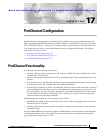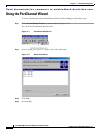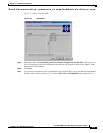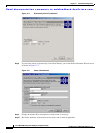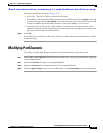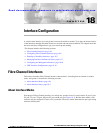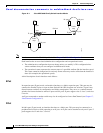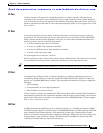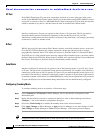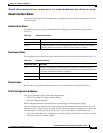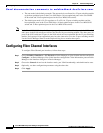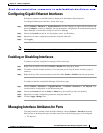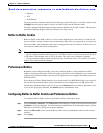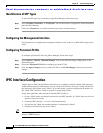
Send documentation comments to mdsfeedback-doc@cisco.com.
18-3
Cisco MDS 9000 Family Fabric Manager Configuration Guide
OL-6965-03, Cisco MDS SAN-OS Release 2.x
Chapter 18 Interface Configuration
Fibre Channel Interfaces
FL Port
In fabric loop port (FL port) mode, an interface functions as a fabric loop port. This port may be
connected to one or more NL ports (including FL ports in other switches) to form a public arbitrated
loop. If more than one FL port is detected on the arbitrated loop during initialization, only one FL port
becomes operational and the other FL ports enter nonparticipating mode. FL ports support class 2 and
class 3 service.
TL Port
In translative loop port (TL port) mode, an interface functions as a translative loop port. It may be
connected to one or more private loop devices (NL ports). TL ports are specific to Cisco MDS 9000
Family switches and have similar properties as FL ports. TL ports enable communication between a
private loop device and one of the following devices:
• A device attached to any switch on the fabric
• A device on a public loop anywhere in the fabric
• A device on a different private loop anywhere in the fabric
• A device on the same private loop
TL ports support class 2 and class 3 services.
Private loop devices refer to legacy devices that reside on arbitrated loops. These devices are not aware
of a switch fabric because they only communicate with devices on the same physical loop.
Tip We recommend configuring devices attached to TL ports in zones that have up to 64 zone members.
TE Port
In trunking E port (TE port) mode, an interface functions as a trunking expansion port. It may be
connected to another TE port to create an Extended ISL (EISL) between two switches. TE ports are
specific to Cisco MDS 9000 Family switches. They expand the functionality of E ports to support the
following:
• VSAN trunking
• Transport quality of service (QoS) parameters
• Fibre Channel trace (fctrace) feature
In TE port mode, all frames are transmitted in EISL frame format, which contains VSAN information.
Interconnected switches use the VSAN ID to multiplex traffic from one or more VSANs across the same
physical link. This feature is referred to as trunking in the Cisco MDS 9000 Family. TE ports support
class 2, class 3, and class F service.
SD Port
In SPAN destination port (SD port) mode, an interface functions as a switched port analyzer (SPAN).
The SPAN feature is specific to switches in the Cisco MDS 9000 Family. It monitors network traffic that
passes though a Fibre Channel interface. This monitoring is done using a standard Fibre Channel
analyzer (or a similar switch probe) that is attached to an SD port. SD ports do not receive frames, they
merely transmit a copy of the source traffic. The SPAN feature is nonintrusive and does not affect
switching of network traffic for any SPAN source ports.



